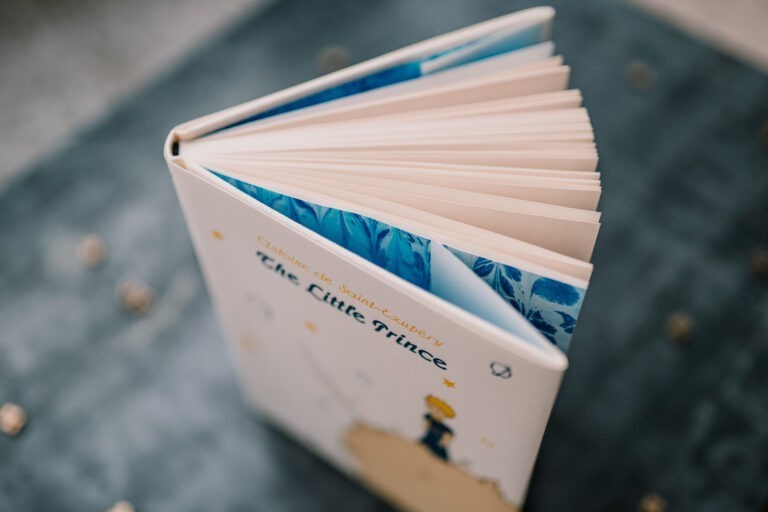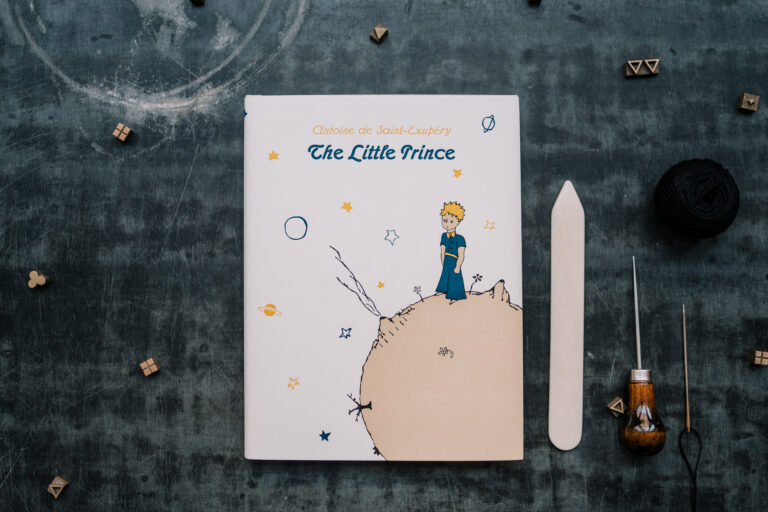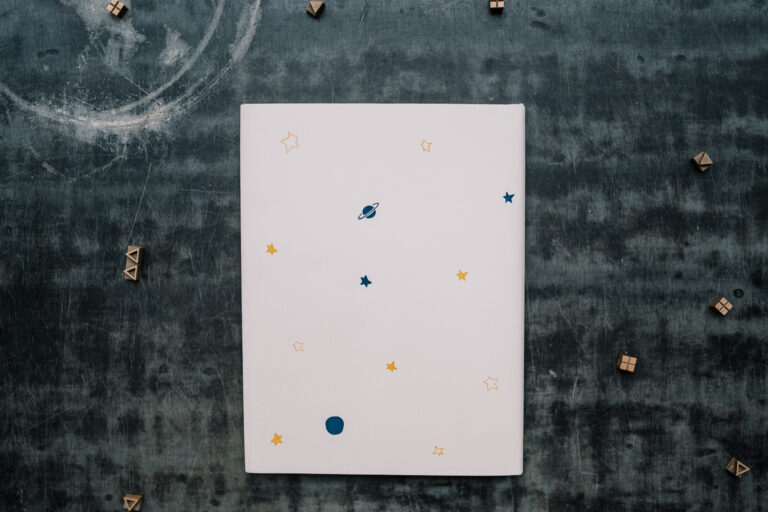The Little Prince limited letterpress edition was bound in two different ways. The first 150 copies (Collector’s edition) were hand-bound at TYPA by our binding specialist Pauline. The rest of the copies (Letterpress edition) were bound by a local print house using contemporary binding machines. Scroll down to read more about how we bound the Collector’s edition.
FIRST STEPS
Once we had finished printing the pages for the book, before actually binding, the pages had to be folded into signatures and punched for sewing. In theory, folding is easy: you just need to fold the big sheet in half, three times. But for the pages to end up in the correct order, they have to be folded in a specific way.
The principle of folding is simple – the sheets must be folded in half, in half and again in half. However, this must be done in the correct order for the pages of the book to run in the correct order.
After all the pages were folded, we punched holes in them, one by one, following a template to ensure that all the holes were exactly in line.

ENDPAPERS
Collector’s editions were bound using special marbled endpapers. To make marbled paper, we filled a bath with marbling liquid, sprinkled the marbling inks on top of the liquid and used special tools to draw a pattern on the surface. After this, we placed a sheet of paper onto the liquid, which caused the inks to transfer onto the paper. For every single endpaper, we had to add new ink onto the liquid and create new patterns, meaning each endpaper is unique.
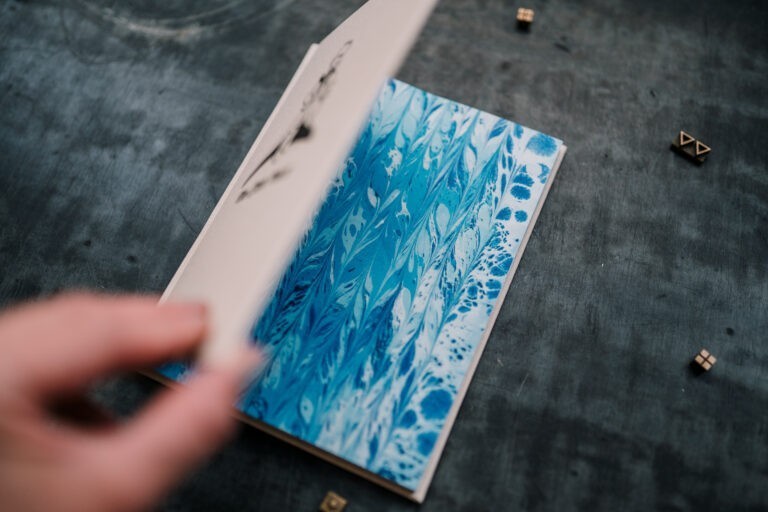
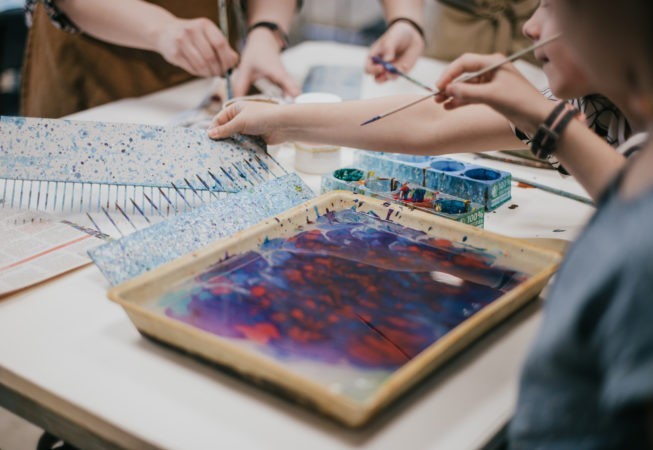
COVERS
The covers of the book were made using a 100% natural linen fabric (Wicotex Naturleinen NAT1010). For the Collector’s edition, we printed the front covers by hand using silk screen.
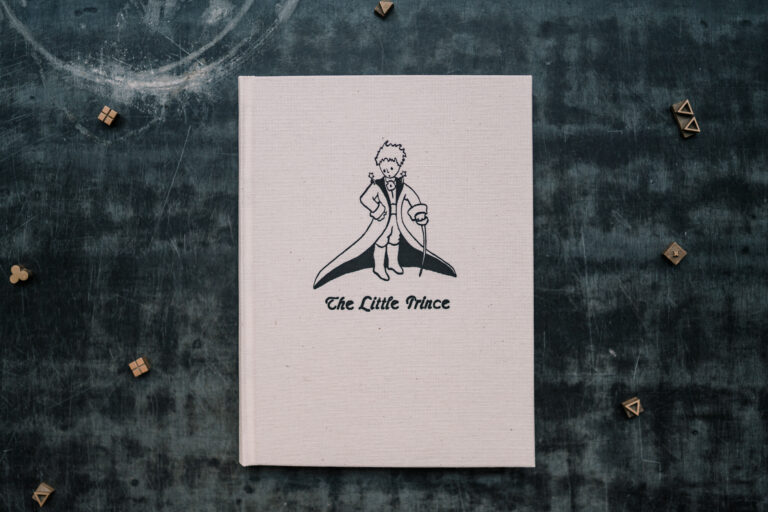
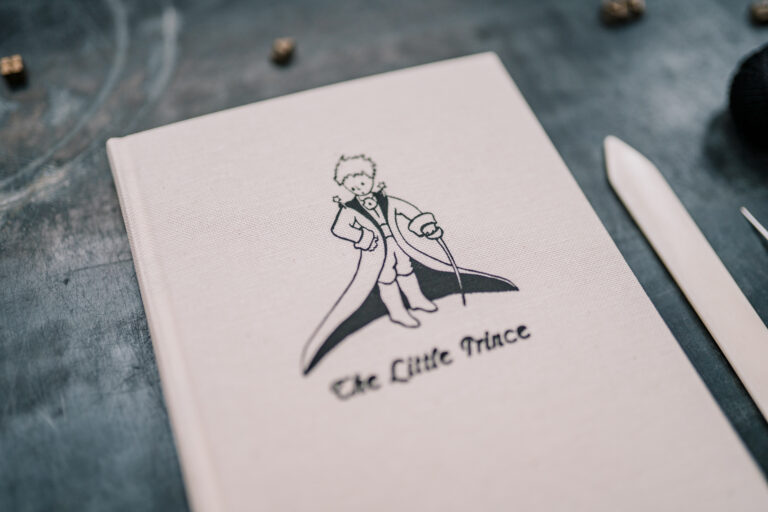
FINALLY – BINDING
Once all the previous steps were completed, we could finally set up a wooden binding frame. We fixed three cloth tapes inside the frame and sewed the pages onto the tapes, using a needle and a thread. For a sturdier result, we waxed the thread with beeswax. The waxed thread also makes it easier to open the book. Once the pages were bound together, we glued the marbled endpapers onto the first and last page. Finally, for a more durable binding, we glued a piece of blinding cloth onto the back of the book block.
When the binding frame was set up and the thread was waxed, Pauline began to sew the folded signatures one by one onto the ribbons. It was necessary to sew six signatures together to make one book. When the content sheets are sewn to the ribbons, we also glued the marbled front pages to the first and last sheet. In order to make the binding stronger, binding fabric had to be glued to the back of the book.



FINISHING THE BOOK
Once the book block was finished, we had to cut it into the correct size using a paper guillotine. After this we added tailbands and glued the book block between the covers. Then we left the book for 24 hours under an old binding press, making sure it dried flat. The book was almost ready!
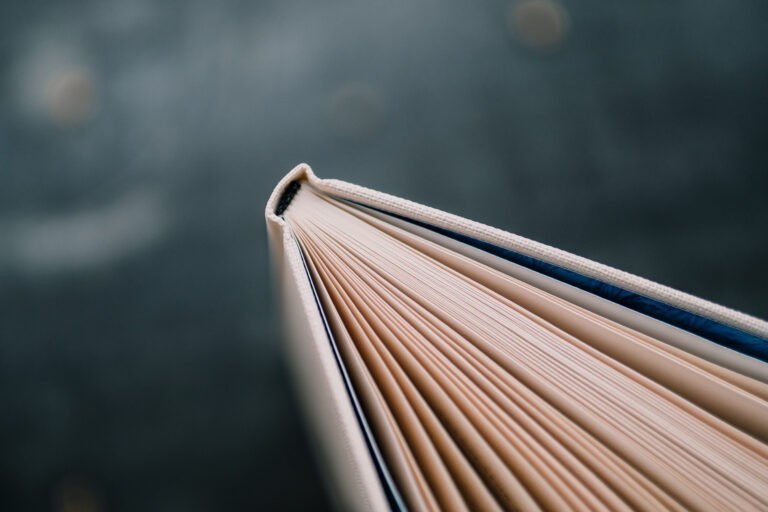
As our collection of Linotype matrices was missing a few french diacritical marks (é, â, ç), we had to add these by hand. And since we published a limited edition of the book, our binding specialist Pauline also numbered each book by hand.
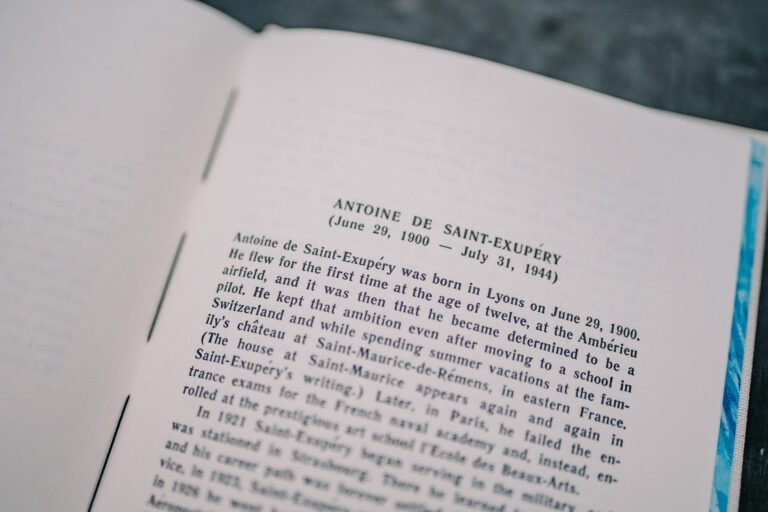
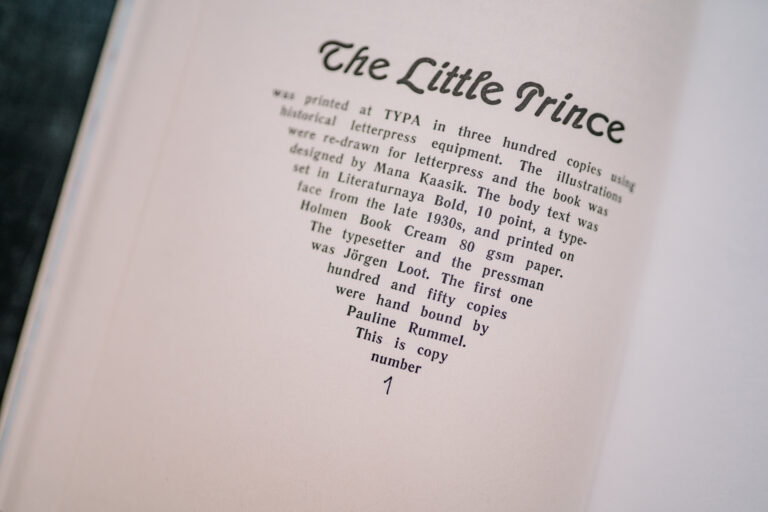
After the finishing touches, the book was finally ready to be wrapped in a dust jacket.
